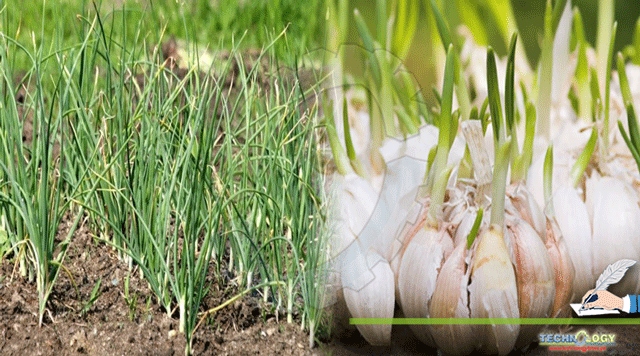Raw garlic (Allium sativum) extract was found to be the most effective and highly specific anticancer drug when compared with 33 raw vegetable extracts against different cancer cells without affecting the non-cancerous cells reported that the anticancer mechanisms of garlic extracts were attributed to the inhibition of cell growth and proliferation, regulation of carcinogen metabolism, stimulation of apoptosis, prevention of angiogenesis, invasion, and migration and thus reducing the anticancer agent’s negative effects. In 1960, tumor cells were reported to be killed when incubated in an allicin solution.

By Aqsa Mehreen, Muhammad Anjum Zia, Maria Naqve, Athar Mehmood
Allicin isolated from garlic was reported to suppress colorectal cancer metastasis through enhancing the immune function and preventing the formation of tumor vessels as well as gene expression to enhance the cancer cell’s apoptosis. It can also enhance the treatment of pancreatic cancer thereby invert gene silencing and restrain cancer cell proliferation Furthermore, it was revealed that allicin can prevent gastrointestinal cancer cells (MGC 803) proliferation and induce apoptosis, which can be accomplished through enhancing p38 expression and cleaved caspase 3. Allicin-derived polysulfanes have been reported to target microtubules, which lead to interruption of the cell-cycle and finally to apoptosis. Several studies reported the activity of allicin in preventing cell proliferation by targeting tubulin that shapes the mitotic spindle and thus inhibits cell division have reported the anti-tumor properties of organo-sulfur compounds including allicin, alliin, allyl mercaptan , and S-allyl cystein, isolated from garlic. In addition, garlic powder inhibited the DNA damage caused by N-nitrosodimethylamine in the liver when administered to rats by 35% and this effect was due to the high concentration of alliin up to 60% in the samples.
Regular garlic intake could decrease different kinds of cancer propagation such as lung, colon, stomach, breast, and prostate.
Garlic reduces the plasma concentrations of saquinavir by about 50% in healthy participants, after 3-week of a garlic supplement uptake, in addition to this, many researchers evaluated the antitumor and cytotoxic actions of garlic and its related constituents in vitro and in vivo.
The genus Allium consisted of many phytochemicals having cancer chemo-protective abilities. Many species of this genus possess cancer-preventive properties. Diallyl sulfides, disulfides and trisulfides from A. cepa, A. sativum, A. schoenoprasum and A. tuberosum are cancer chemoprotective phytochemicals. In addition, Allium species also contain flavonoids, saponins and carotenoids which are cancer chemo-protective.
Garlic is known to have anti-tumor properties by stimulating lymphocytes and macrophages to destroy cancer cells as well as to disrupt the metabolism of tumor cells. Various studies revealed that garlic can reduce the development of colon, skin, stomach and bladder cancer. It can inhibit the formation nitrosamines and DNA adducts. Allium derivatives from garlic have extensive anti-proliferative effect on human cancers. These garlic derivatives have been found effective for both hormone responsive and unresponsive cell lines by inducing apoptosis, regulation of cell cycle progression/ proliferation, modification of pathways of signal transduction and regulate nuclear factors involved in immune function and inflammation.
The anticancer effects of ginger (Zingiber officinale) are thought to be attributed to various constituents including vallinoids, gingerol, paradol, shogaols, zingerone, and Galanals A and B. Galanals A and B have been found to be potent apoptosis inducers of human T lymphoma Jurkat cells. With regards to the anticancer activity gingerol, reputedly the most active ginger constituent, has only been evaluated for its effect on various stages of carcinogenesis, whereas paradol has been demonstrated for antiproliferation activity in liver, pancreatic, prostate, gastric and leukemia cancer cells, and shogaol for anticancer activity against breast cancer.
The apoptotic activity of the crude ethanolic extract of ginger was determined by electrophoresis of DNA. Ethanolic extract of ginger Two ginger varieties parts (leaves and rhizomes) were found to express cancers inhibitory activity.
Extract of Halia Bara rhizomes grown under elevated CO2 concentration exhibit lowest cell viability at 38.98 and 39.61%. The anticancer activity of leaves extract in ambient CO2 concentration was significantly stronger than that of the rhizomes extracts.
Quercetin helps in the inhibition of breast cancer. In ginger quercetin is an abundant flavonoid compound. Antioxidant activity of quercetin was believed to have cytoprotective role against oxidative stress. It seemed that quercetin does not only protect cells from free radical damage through antioxidant effect, but also motivate apoptotic cell death through pro-oxidant activity, and inhibits tumorigenesis. High concentration of quercetin was detected from Halia Bentong and Halia Bara leaves and rhizomes compared to other flavonoid compounds. Then anticancer power maybe related to quercetin content in those varieties. Accordingly, flavonoid compounds could probably be responsible for the anticancer activity of garlic.